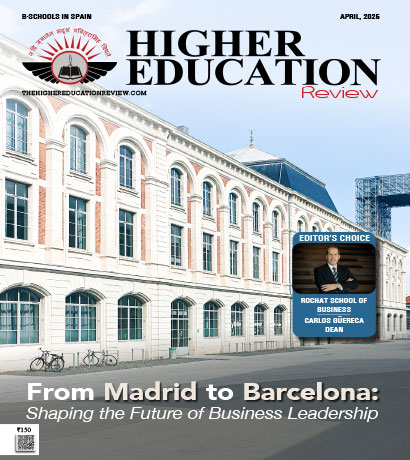The Devil is in the Detail - Matching the Right Technology to the Right Employee

Niloy Mukherjee, Vice President Product Marketing, APJ, Client Solutions, Dell
The right technology has the ability to empower workers to make the most out of their day. Advances in technology are on par with the demands and expectations of the workplace but the adoption of these technologies is in fact still rather slow. Gone are the days where employees willingly chain themselves to their desk from 9.00 AM to 5.00 PM. Now, armed with the latest technology, the modern worker has the choice to venture out of his or her office at any given time and continue working without issue - and enterprises need to be able to meet this growing demand to attract the best and the brightest to join their ranks.
"While IT makes the purchasing decisions for technological products, it is other departments like Human Resources (HR) who are often privy to employee habits and needs"
Of course, there are challenges: six in 10 enterprise leaders in the Asia Pacific and Japan (APJ) region are struggling to keep up with the pace of change according to the latest Realizing 2030: A Divided Vision of the Future research. For employees, there are high expectations: according to the CIO Connected study, 84 percent of employees stated that technology influences which job offer they accept. With 60 percent of the world's millennials living in APJ, we will soon see more and more millennials joining the workforce in the coming years - so we have to address the question -how are we leveraging technology to prepare for the future?
Adopt user-oriented technology that fits with work habits
Implementing technology with a user-first approach is integral to truly enhancing your organization's competitive advantage. For employees working on-the-go, the design of a laptop should not only be focusing on aesthetic appeal alone - if the laptop has a large footprint, it would be difficult to work in confined spaces such as an airplane tray table. If it's a smaller screen device, that was bought a few years back, its battery would definitely not be able to last a day trip. Such factors make it imperative for us to match user habits to equipment functionality when looking for the optimal work place technology for your employees.
Moreover, it is also crucial to match users to devices based on their needs, rather than factors like job titles or seniority. Considerations must include working style, requirements of their roles, and the complexity of their jobs. For instance, a sales director would require a smaller, lightweight laptop with longer battery life for offsite meetings, while a "big data" analyst may require a 15-inch laptop with higher computing power and monitor docking options to edit and run complex documents. Using this approach, employees can be matched easily with the right technologies according to their needs and working habits, better enhancing efficiency and improving productivity.
Drive synergy through stronger collaboration
Though it seems easy to adopt workplace technologies with a user-oriented approach, it is often easier said than done. Assessing user habits alone is a rather daunting task as it calls for closer collaboration between different functions in the business. While IT makes the purchasing decisions for technological products, it is other departments like Human Resources (HR) who are often privy to employee habits and needs. Hence, it would be important for the HR team and other departments to develop effective processes to work closely with IT to ensure user roles and business needs are taken into consideration during IT purchases. Such processes would include regular review of workplace technology and timely updates on changes in business needs.
Enable flexibility in working hours
In addition to technology, we also have to evaluate policies that support a fully remote and flexible workforce. Almost nine in 10 APJ leaders surveyed through Realizing 2030 research believe that this is a crucial component impacting digital transformation at the workplace. Working remotely brings about benefits like saving time on commuting, providing better care for dependents, or achieving healthier work-life balance. In the Realizing 2030 research, half of the business leaders in APJ expect to have a more globally connected yet remote workforce by 2030.
In fact, many of the younger employees value the balance of productivity and quality of life, with almost half of them believing that automated systems will help to free up their time and increase their job satisfaction through offloading undesired tasks to machines, according to Realizing 2030 research. In APJ, there have been a number of public and private sector initiatives that recognize the benefits of remote, flexible work arrangements, such as the Tripartite Standards on Flexible Work Arrangements led by Ministry of Manpower in Singapore and the national "Telework Day" campaign launched by the Ministry of Economy, Trade and Industry in Japan. This flexibility will be achieved by equipping your employees with technology that provides them with access.
In this digital era, organizations have to adopt a holistic and collaborative approach to fully leverage technology and improve on job satisfaction amongst their workforce - all eventually helping the enterprise to improve their productivity and bottom line. IT, HR and other business unit leaders must work together to ensure that the technologies complement working practices and are a positive draw for new employees with different technology expectations. Taking these steps towards achieving workplace transformation will go a long way in setting your enterprise up for success till 2030 and beyond.
Niloy Mukherjee
Niloy Mukherjee is Senior Executive with over 26 years of experience in Marketing & Sales, Strategy. He has worked for McKinsey, Dell, HP / Compaq & India's TATA group. He is considered as a thought leader in the industry, especially in Strategy & Planning, Product Management & Marketing, Pricing, Sales Excellence, Marketing Operations, Commercial Transformations and Capability Building.
"While IT makes the purchasing decisions for technological products, it is other departments like Human Resources (HR) who are often privy to employee habits and needs"
Of course, there are challenges: six in 10 enterprise leaders in the Asia Pacific and Japan (APJ) region are struggling to keep up with the pace of change according to the latest Realizing 2030: A Divided Vision of the Future research. For employees, there are high expectations: according to the CIO Connected study, 84 percent of employees stated that technology influences which job offer they accept. With 60 percent of the world's millennials living in APJ, we will soon see more and more millennials joining the workforce in the coming years - so we have to address the question -how are we leveraging technology to prepare for the future?
Adopt user-oriented technology that fits with work habits
Implementing technology with a user-first approach is integral to truly enhancing your organization's competitive advantage. For employees working on-the-go, the design of a laptop should not only be focusing on aesthetic appeal alone - if the laptop has a large footprint, it would be difficult to work in confined spaces such as an airplane tray table. If it's a smaller screen device, that was bought a few years back, its battery would definitely not be able to last a day trip. Such factors make it imperative for us to match user habits to equipment functionality when looking for the optimal work place technology for your employees.
Moreover, it is also crucial to match users to devices based on their needs, rather than factors like job titles or seniority. Considerations must include working style, requirements of their roles, and the complexity of their jobs. For instance, a sales director would require a smaller, lightweight laptop with longer battery life for offsite meetings, while a "big data" analyst may require a 15-inch laptop with higher computing power and monitor docking options to edit and run complex documents. Using this approach, employees can be matched easily with the right technologies according to their needs and working habits, better enhancing efficiency and improving productivity.
Drive synergy through stronger collaboration
Though it seems easy to adopt workplace technologies with a user-oriented approach, it is often easier said than done. Assessing user habits alone is a rather daunting task as it calls for closer collaboration between different functions in the business. While IT makes the purchasing decisions for technological products, it is other departments like Human Resources (HR) who are often privy to employee habits and needs. Hence, it would be important for the HR team and other departments to develop effective processes to work closely with IT to ensure user roles and business needs are taken into consideration during IT purchases. Such processes would include regular review of workplace technology and timely updates on changes in business needs.
Enable flexibility in working hours
In addition to technology, we also have to evaluate policies that support a fully remote and flexible workforce. Almost nine in 10 APJ leaders surveyed through Realizing 2030 research believe that this is a crucial component impacting digital transformation at the workplace. Working remotely brings about benefits like saving time on commuting, providing better care for dependents, or achieving healthier work-life balance. In the Realizing 2030 research, half of the business leaders in APJ expect to have a more globally connected yet remote workforce by 2030.
In fact, many of the younger employees value the balance of productivity and quality of life, with almost half of them believing that automated systems will help to free up their time and increase their job satisfaction through offloading undesired tasks to machines, according to Realizing 2030 research. In APJ, there have been a number of public and private sector initiatives that recognize the benefits of remote, flexible work arrangements, such as the Tripartite Standards on Flexible Work Arrangements led by Ministry of Manpower in Singapore and the national "Telework Day" campaign launched by the Ministry of Economy, Trade and Industry in Japan. This flexibility will be achieved by equipping your employees with technology that provides them with access.
In this digital era, organizations have to adopt a holistic and collaborative approach to fully leverage technology and improve on job satisfaction amongst their workforce - all eventually helping the enterprise to improve their productivity and bottom line. IT, HR and other business unit leaders must work together to ensure that the technologies complement working practices and are a positive draw for new employees with different technology expectations. Taking these steps towards achieving workplace transformation will go a long way in setting your enterprise up for success till 2030 and beyond.
Niloy Mukherjee
Niloy Mukherjee is Senior Executive with over 26 years of experience in Marketing & Sales, Strategy. He has worked for McKinsey, Dell, HP / Compaq & India's TATA group. He is considered as a thought leader in the industry, especially in Strategy & Planning, Product Management & Marketing, Pricing, Sales Excellence, Marketing Operations, Commercial Transformations and Capability Building.

